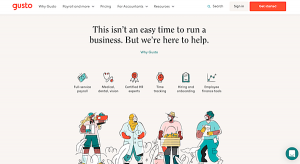— April 5, 2019
Building (and hiring) a great team takes time and effort. Patrick Lencioni’s “The Five Dysfunctions of a Team” became a staple reading in an Agile community these days. And for a good reason. Agile ways of working are all about teamwork. A self-organizing and cross-functional team is in the heart of the Scrum framework. In the book, the author cites the following 5 dysfunctions:
- lack of trust due to invulnerability
- fear of conflict to preserve artificial harmony
- lack of commitment leading to ambiguity
- avoidance of accountability amongst the team members and consequent lowering of the standards, and the pinnacle of it all
- inattention to collective results due to self-serving behaviors.
Some time ago I hear someone saying that he’d rather read Lencioni’s “The Ideal Team Player.” I had a chance to listen to it last night on my drive from PSPO TtT from Dallas to Houston. I am still perplexed what took me so long to get to it.
The book starts with a fable. A guy, tired of hustle and bustle of Silicon Valley moves to Northern Cali to take a position with his uncle’s construction company. Soon, as his uncle’s health deteriorates, he steps into the role of a CEO and faces the question of what teamwork means. He quickly concludes that while teamwork is a company’s value, they don’t know or realize what exactly that means and, more importantly, what qualities people should bring to the table to be good team players.
He and his top 2 lieutenants come to a conclusion, that an ideal team player would possess the following 3 important qualities. S/he should be
- humble – it’s about the team, not about “I” on the team
- hungry – hunger for achieving more, for getting things done
- smart – not intelligent, but people smart.
The fable itself is somewhat entertaining to listen to and definitely puts these 3 qualities in the context of a specific story.
However, I find that the last several chapters that delve into “The Ideal Team Player” model and describe the qualities in detail are the most useful parts of the book. These chapters also deal with types, that lack (or miss completely) 1 or 2 of the 3 qualities. Lencioni names them all, and it’s super easy to remember those and associate with specific type of a person. As a matter of fact, as I was listening through the description I vividly imagined a person I knew who’d be a fit for the specific type.
- Those possessing a single quality:
- Humble (but not smart or hungry) – pawn
- Hungry – bulldozer
- Smart – charmer
- Those possessing 2 of 3 qualities
- Humble and Hungry (but not smart) – accidental mess-makers
- Humble and Smart (but not hungry) – loveable slackers
- Hungry and Smart (but not humble) – skillful politicians
The author goes to the great length to warn the readers against the skillful politicians as it’s the hardest type to pin down. The fable helps with this a lot.
Lencioni suggests that the Ideal Team Player model can be used to build a team, analyze existing team, and drive necessary behavioral changes.
He goes to the great length to list several interview questions that can be used to gauge a level of specific quality in the candidate. A great suggestion I liked is to use questions like, “What would your friend (co-worker, family member) said …”
To wrap it up, while 5 dysfunctions are a must read for any Agile practitioner, I think it’s not enough. After you are done with that – move on to the Ideal Team Player. The model it describes should be an indispensable tool in an Agile coach tool belt.
Business & Finance Articles on Business 2 Community
(178)
Report Post







